Your Guinea Pig
A Kids Guide to Raising and Showing
WANDA L. CURRAN

The mission of Storey Publishing is to serve our customers
by publishing practical information that encourages personal independence
in harmony with the environment.
Thank-you to John, Bertie, Lexi, Terril, Jim, and Louise, all of whom endured the writing of this book by proofreading before the manuscript went to the editor. A special thank-you to Monique and her crew for the close-up photos my camera could not manage.
Edited by Lorin A. Driggs and Deborah Balmuth
Cover and text design by Carol J. Jessop
Cover photograph Positive Images/Patricia J. Bruno
Text production by Wanda Harper Joyce
Photographs by Wanda L. Curran unless noted otherwise
Line drawings by Jeffrey C. Domm
Technical review by Sheri Schlorman, D.V.M.
Indexed by Northwind Editorial Services
1995 Wanda L. Curran
All rights reserved. No part of this book may be reproduced without written permission from the publisher, except by a reviewer who may quote brief passages or reproduce illustrations in a review with appropriate credits; nor may any part of this book be reproduced, stored in a retrieval system, or transmitted in any form or by any means electronic, mechanical, photocopying, recording, or other without written permission from the publisher.
The information in this book is true and complete to the best of our knowledge. All recommendations are made without guarantee on the part of the author or Storey Publishing. The author and publisher disclaim any liability in connection with the use of this information. For additional information, please contact Storey Publishing, 210 MASS MoCA Way, North Adams, MA 01247.
Storey books are available for special premium and promotional uses and for customized editions. For further information, please call 1-800-793-9396.
Printed in the United States by Versa Press
20 19 18 17 16 15 14 13 12 11 10
Library of Congress Cataloging-in-Publication Data
Curran, Wanda, 1949
Your guinea pig : a kids guide to raising and showing / Wanda L. Curran.
p. cm.
Includes bibliographical references (p. ) and index.
ISBN-13: 978-0-88266-889-5 (pb)
ISBN-10: 0-88266-889-7 (pb)
1. Guinea pigs as petsJuvenile literature. [1. Guinea pigs. 2. Pets.] I. Title.
SF459.G9C94 1995
636.93234dc20
94-42164
CIP
AC
Dedication
This book is dedicated to
my 4-H cavy project members, past, present, and future,
without whom it would not have been written.
Contents
Choosing Your Guinea Pig
Guinea Pig Housing and Equipment
Feeding Your Guinea Pig
Keeping Your Guinea Pig Healthy
Breeding Your Guinea Pigs
Grooming Your Guinea Pig
Marketing Your Guinea Pigs
Guinea Pig Handling and Showmanship
Showing Your Guinea Pigs
Managing Your Caviary
Activities for Young Guinea Pig Owners
A Few words to Parents
Children always want a pet. Ill feed him. Ill clean his cage, promises an eager would-be pet owner. The problem is that young children may not comprehend the real responsibility of pet ownership. It helps when responsibility for a pet is really a partnership between parents and young children. A guinea pig is a very easy way to begin introducing responsibility for the care of pets to your child.
Guinea pigs are becoming more and more popular as pets because they require little space, are nearly odorless, and can even be raised in an apartment in the city. The fact that they are relatively inexpensive to purchase and house is also a factor in the growing popularity of guinea pigs as pets and hobbies.
Raising a guinea pig can be a very rewarding and educational experience for both you and your child. Being there to support and help your child learn the fun and the work of raising this extraordinary little creature is one of the best ways to teach responsibility. You may be amazed at how many things you and your child can find to talk about as you hold the guinea pig while he or she cleans the cage.
There is almost no limit to the knowledge your child can gain by raising guinea pigs, including valuable lessons about life, death, birth, organization of chores, and planning for the future. As your child matures, she or he may learn business sense and something about ethics when dealing with customers. Your child also may discover many new interests and new talents because of the knowledge gained from this wonderful hobby.
One last thought. Ninety-nine percent of the time, the choice of your childs first guinea pig will be a matter of heart rather than knowledge. Once the first guinea pig has been chosen, the real fun and learning about guinea pigs begin. Even though this first pet may not be perfect for showing, it will likely be treasured for as long as it lives.
Here is an idea that may help you help your child make the best possible choice for a first guinea pig. If it is possible, go in advance and find several suitable guinea pigs. Then allow your child to choose, among these select few, that very special pet of the heart.
The adventure begins. Learn and work together, but above all else, have patience and have fun.
Introduction
Because of their size, guinea pigs make wonderful pets even for children as young as 5 years old. Adult guinea pigs weigh 2 to 4 pounds, which makes them easier to handle than larger pets. Guinea pigs also have very good temperaments. They are not as likely to bite as hamsters, rats, mice, gerbils, and other rodents kept as pets; they do not have the annoying, strong, musky odors for which other rodents are known. They are not particularly inclined to climb, jump, or chew, which makes housing guinea pigs easier than housing other rodents. The personality of guinea pigs is A+.

The personality of guinea pigs is A+.
Guinea pig is the common name for the cavy. Cavy is short for the species name Cavia porcellus. Under the family name of Caviidae, guinea pigs are described as South American rodents with no visible tail, a single pair of mammae, four toes on each forefoot, and three toes on each hind foot.
It is funny that this delightful little animal, which neither comes from Guinea nor is a pig, is called a guinea pig. The most accepted explanation for the name is that the animals do grunt and squeal something like a pig and were sold by British sailors for a guinea, an old English coin.
Herbivorous.Plant-eating.
If guinea pigs are given good care they may live 5 to 7 years. They are strictly herbivorous, which means plant-eating. They have a continuous breeding season, though they do not breed as often as other rodents. Guinea pigs usually have small litters of 1 to 3 pups. Guinea pigs can see and hear, have a full coat of hair, have teeth, and are able to walk and nibble at food within hours after birth.
Recognized Guinea Pig Breeds
 Abyssinian
Abyssinian



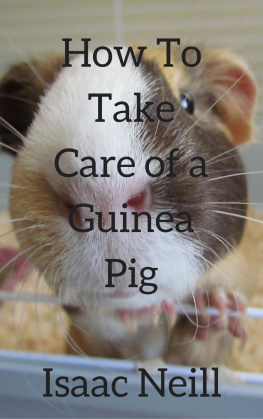
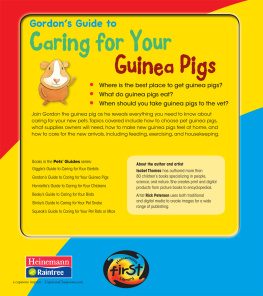



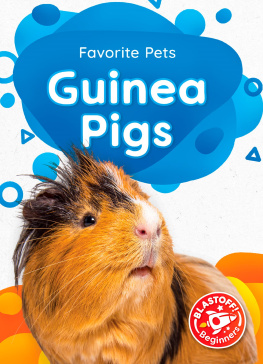
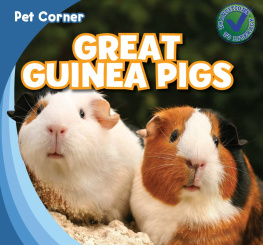
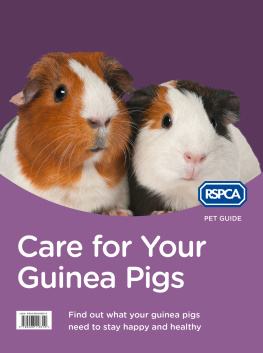
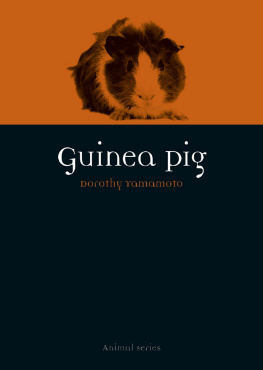


 Abyssinian
Abyssinian